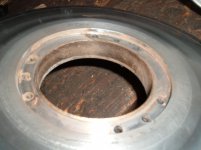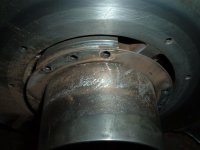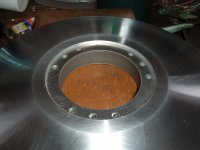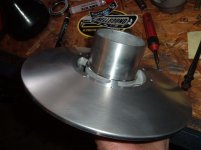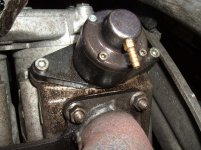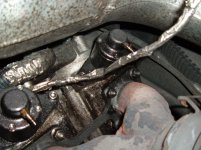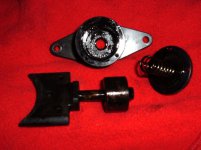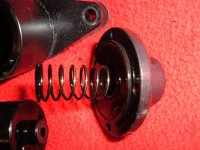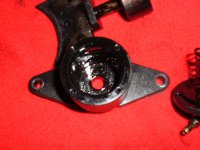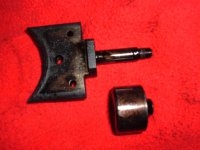660 brass clutch bearing failure STM power valve oil
I installed a 660 brass bushing in my moveable sheave on my secondary clutch because it was worn paste the .020 wear limit. I went out west for 5 days and it held up for them five days but it is toast now. I had to purchase a new secondary clutch and went with the BDX extreme heavy duty clutch. The bearing in the secondary moveable sheave has 80% more bearing surface and so far with about 300 miles on it is performing excellent. As you can see in the picture the bearing goes all the way thru but on the stock clutch the bearing is less than half the width of the sheave.The STM power valves have about 650 miles on them in this picture and I am showing how much oil comes out of the vent tube onto the engine if no tube is installed. I did not install a hose on the vent because I thought it would melt and then close off the vent. As soon as the snow melts I will have pictures of the valves disassembled. 1st picture worn out brass bushing in clutch 2nd pic worn secondary stationary sheave, picutures 3 and 4 are the new BDX clutch, last picture is the STM power valves showing the oil that will come out over 650 miles.
I installed a 660 brass bushing in my moveable sheave on my secondary clutch because it was worn paste the .020 wear limit. I went out west for 5 days and it held up for them five days but it is toast now. I had to purchase a new secondary clutch and went with the BDX extreme heavy duty clutch. The bearing in the secondary moveable sheave has 80% more bearing surface and so far with about 300 miles on it is performing excellent. As you can see in the picture the bearing goes all the way thru but on the stock clutch the bearing is less than half the width of the sheave.The STM power valves have about 650 miles on them in this picture and I am showing how much oil comes out of the vent tube onto the engine if no tube is installed. I did not install a hose on the vent because I thought it would melt and then close off the vent. As soon as the snow melts I will have pictures of the valves disassembled. 1st picture worn out brass bushing in clutch 2nd pic worn secondary stationary sheave, picutures 3 and 4 are the new BDX clutch, last picture is the STM power valves showing the oil that will come out over 650 miles.
Attachments
Last edited:

